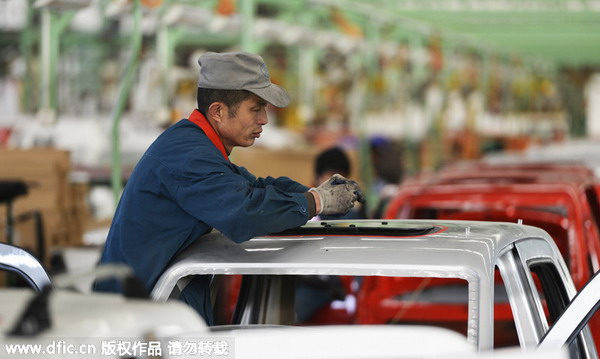 |
|
A Chinese worker assembles a new energy car on the assembly line at an auto plant in Zouping county, East China's Shandong province, Dec 16, 2014. [Photo / IC] |
"Innovative Development" is the first of the Five Major Development Concepts, President Xi Jinping's guiding strategy to transform China's economy. Innovation occupies the top spot because it signals that China's leaders are enhancing the role of reform. Reform requires change, change requires doing things differently, and doing things differently requires innovation.
In investigating the Five Concepts for Closer to China with R.L. Kuhn, my weekly program on CCTV News (Sundays at 9:30 am and 9:30 pm), I looked for two kinds of innovation-in science and technology, as well as in management and processes.
I found both kinds of innovation at Commercial Aircraft Corporation of China, or COMAC, which is developing the country's large commercial aircraft, beginning with the C919. Building such aircraft requires sophisticated technology, systems and processes, and innovation is essential for all three.
For innovation to succeed, nurturing talent and fostering an environment that appreciates innovation are essential. State-owned enterprises are often rigid, not very conducive to disruptive change or friendly to individual initiative. So can COMAC stimulate the kind of innovation that is required to compete with Boeing and Airbus?
I discussed innovation, and how it can be enhanced, with COMAC Chairman Jin Zhuanglong.
"Our work emphasizes innovation, entrepreneurship, and creative development," Jin said. "We have innovated our management systems and governance. We have less than 10,000 personnel, but we need to develop two or even three major commercial aircraft. The key lies in innovation. We've put forward a six-dimensional management model; we must manage our planning, technologies, quality, airworthiness, finances and personnel-and we must coordinate them all."
Jin will not sacrifice quality. "Our goal is to raise China's manufacturing percentage of domestic-made aircraft. But if certain components made in China are not up to our standards, we invite tenders from across the globe to guarantee quality, even while we gradually improve localized products. I see no conflict between independent development and international cooperation. Rather, they complement each other. If we do not open up to the outside world, if we do not adopt some of the world's most advanced materials and technologies, then our future would be bleak. Overall, though, we must adhere to our principles-specifically, China designs the aircraft and improves the systems."
Jin spoke of "painful growing pains". He said: "We must be prepared for a period of suffering, so we work step by step, slowly and surely; we do not expect instant success, we are not anxious."
The example he gives is the ARJ21, China's regional jet. "We have undertaken 10 years of research to ensure its safety, to enhance its competitive position."
China's bid to build its own civil aircraft began much earlier. In the 1970s, when China was still very poor, it designed and constructed three Y-10 four-engine models. In 1980, one made its maiden flight, but the program was halted.
On the COMAC property in Shanghai, on a large lawn in front of an original Y-10 aircraft, is a modern sculpture with a simple but powerful inscription: "Never Give Up!"
That's the spirit of innovation!
The Chinese government is determined to promote innovation nationwide, particularly in science and technology, but also more broadly, because it realizes that not only industry, but also the whole country's new developmental model requires innovative ideas. For example, high-tech industrial parks provide services from incubation facilities for start-ups to industrial supply chains for efficient production. In addition, regional coordination seeks to integrate and upgrade area innovation capabilities.
But beware innovation-based businesses! They are more complex, and less predictable, than businesses based on low-cost manufacturing. Innovation cannot be commanded top-down. It cannot be bought solely with money. What determines market success is often not obvious-and subtle effects, not in one's control, can make or break new products.
The success rate for innovation is by nature low. This means an innovation-based economy must accept failure. If all of your ideas work, it means you have too few ideas. Innovation is a disruptor; it does not respect tradition, seniority or authority. China is committed to innovation. Innovation can change China.
The author is a public intellectual, political/economics commentator, and international corporate strategist.